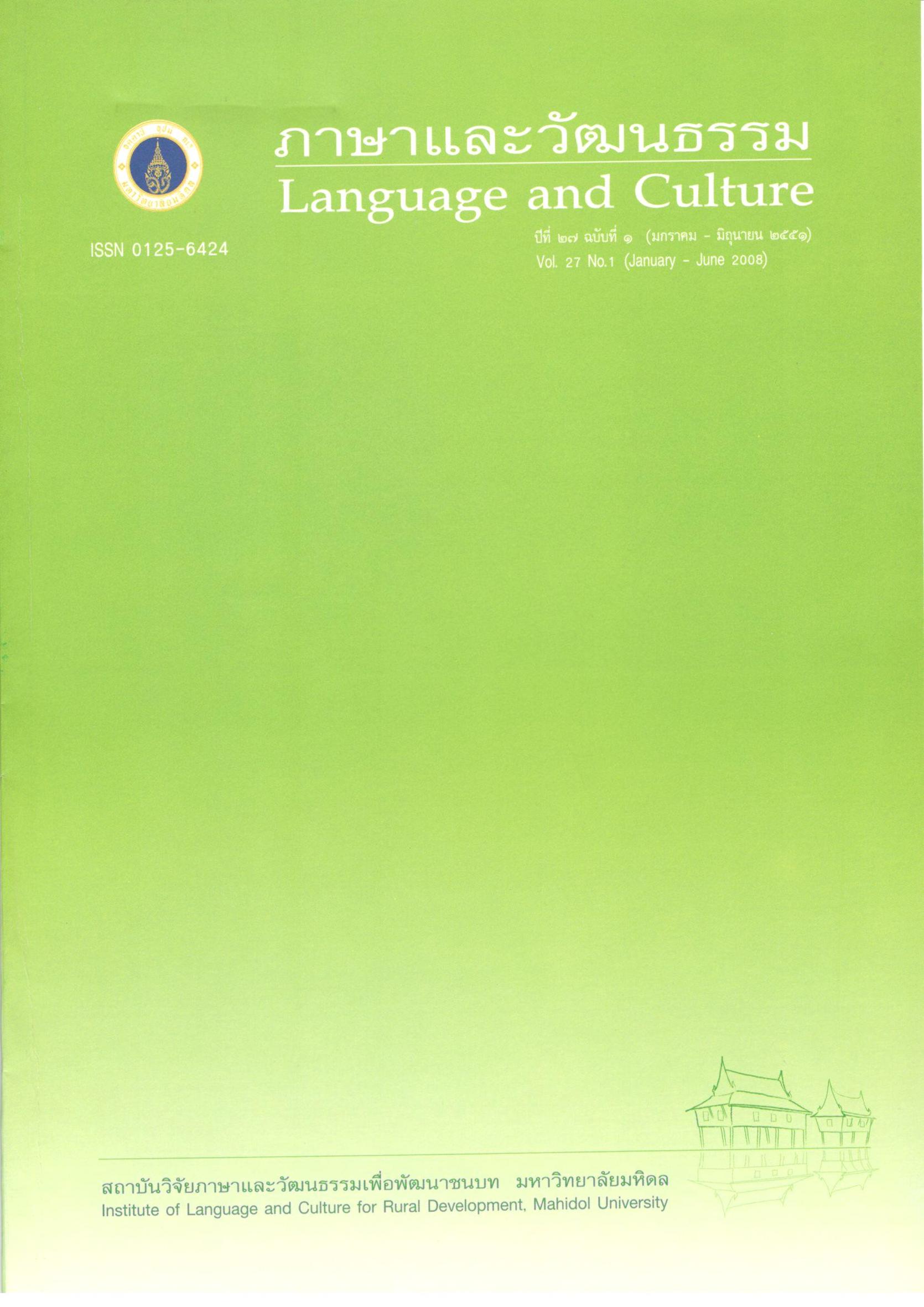A Comparison of Classifier Usage among Three Generations in Lao Ubon
Main Article Content
Abstract
This paper aims to study classifier usages which are varied by the age of the speakers of Lao Ubon, a Notheastern Thai dialect spoken in Ubon Ratchathani Province (UB), Thailand. The informants are divided into three generations, G1 G2, G3 representing the old, middle aged, and young generation respectively. The classifier usages have been categorized into two types, the single and combined types. Based on the single type of classifier used by the three generations, it is found that the number of specific classifiers used by G1 speakers or the old generation is the most and the number of specific classifiers used has decreased in G2 and G3 respectively.
This finding supports the hypothesis that the number of specifiers used in the society has decreased because the younger generation tends to use some classifiers more broadly, such as general classifiers and repeater classifiers because it is easier than using specific ones. The older generation tends to use original classifiers rather than the Central Thai classifiers. The G1 speakers use specific classifiers with most nouns when compared to the other generations. In contrast with the old generation, the younger generation uses repeaters and general classifiers with many nouns, so specific classifiers are used less by G3 speakers.
On the other hand, when the combined types of classifiers are considered, the number of specific classifiers used by G3 has increased significantly due to the fact that G3 speakers use all types of classifiers, that is, UB specific classifiers, specific classifiers borrowed from Central Thai as well as new classifiers created for some nouns. G3 speakers have been exposed to Central Thai mostly by media such as television and schools where Central Thai is used as a medium of instruction and have added Central Thai classifiers to their classifier system.
Classifiers used among three generations in UB are compared with other three sub-dialects; Nakhon Ratchasima sub-dialect (NR), Khonkaen sub-dialect (KK) and Lao. There are twenty classifiers which appear with the same nouns in all four sub-dialects so these classifiers are compared. The classifiers used in NR seem to differ from the other three sub-dialects. They are similar to those used in Central Thai both in form and meaning. On the other hand, since UB borders Laos, the classifiers used in UB are closely related to those used in Laos.
Article Details
The articles featured in the Journal of Language and Culture (JLC) constitute academic works representing the viewpoints of the respective author(s). It is crucial to note that these opinions do not necessarily reflect those of the Editorial Board.
All articles published in JLC are released under the Creative Commons Attribution 4.0 International License (CC BY 4.0). This license grants permission for unrestricted use, distribution, and reproduction in any medium, provided proper credit is given to the original author(s) and the source.


